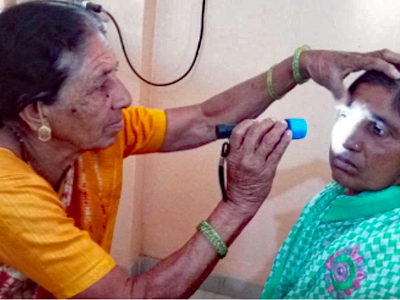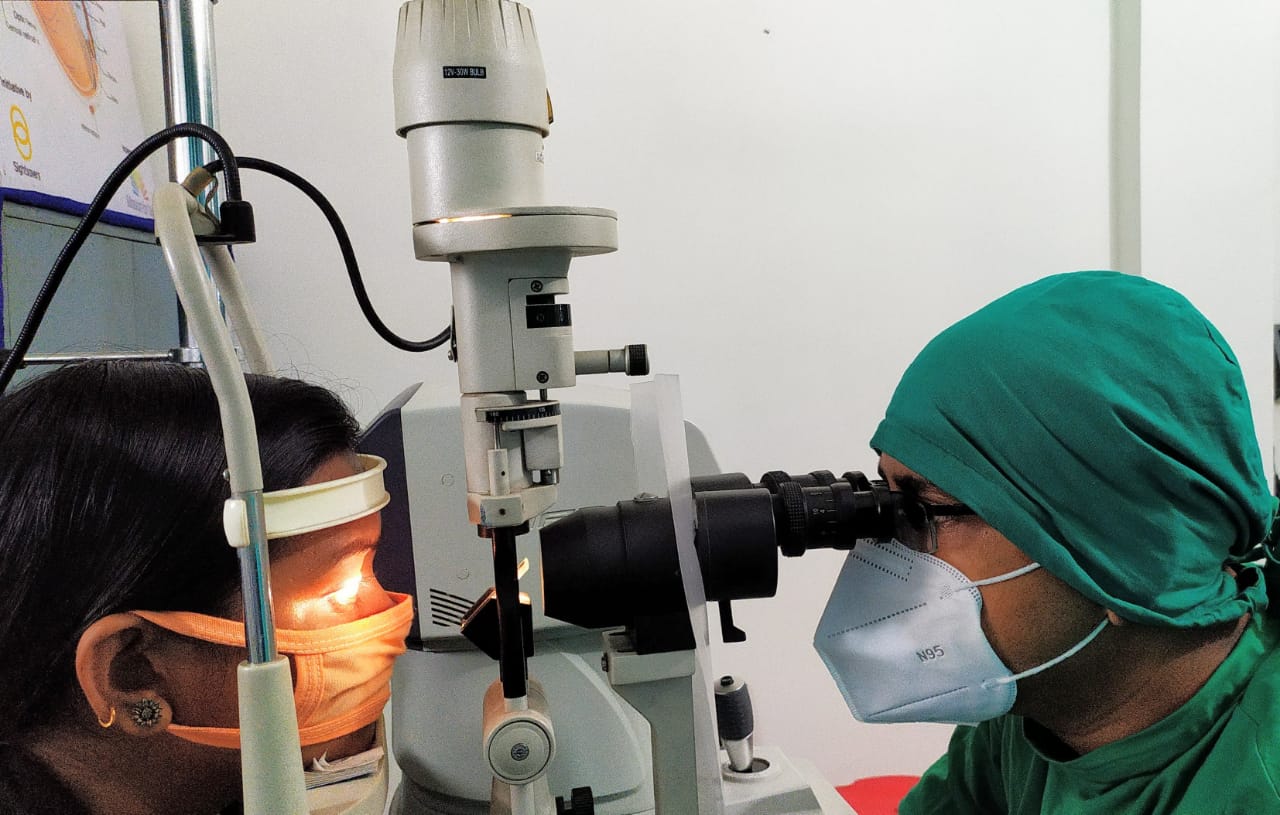Understanding Visible and Invisible Strabismus
Created By: Samidha Karmakar

In a move to create greater awareness on eye health and other related matters, this blog post focuses on the topic of Strabismus. Samidha Karmakar is a third year Optometry student from Pailan College of Management & Technology, Kolkata, West Bengal who shares with us the details about strabismus from a medical point of view.
Strabismus is a misalignment of the eyes and is one of the most common eye problems in children. This eye disorder affects approximately 4 percent of children under the age of six years. The eyes (one or both) may turn inward, outward, turn up, or turn down. At times, more than one of these conditions are present. Strabismus is also called "wandering eye" or "crossed-eyes."1
Now, let us understand this deeper with heterotopia and heterophoria differences. Binocular vision consists of three grades, the state of simultaneous vision with two seeing eyes occurs when the individual fixes his/her visual attention on an object to form a single mental impression at the same time.
Grades of binocular vision
- Simultaneous Macular perception
- Fusion
- Stereopsis
The anomalies could be a refractive error by birth or maturity, accommodation anomalies are deficient or decreased accommodation (presbyopia, insufficiency of accommodation, paralysis of accommodation), excessive and spasm of accommodation, ocular misalignment, innervations anomalies, palsies of Extra Ocular Muscle (EOM), Mechanical restriction, trauma, systemic disease.
Both visible squint and invisible squint fall under ocular misalignment, also known as strabismus (squint). When the individual is tenting to focus at an object, one eye is observed to align with the object axis; whereas the other eye is on the other direction of the object axis. This could be due to suppression of one eye over the other in young children, which may lead to lazy eye. In case of adults, it is more of diplopia, a newly grown squint and the reasons stated above could also be the reasons as anomalies.

Apparent squint and pseudo-strabismus (False strabismus) are sometimes diagnosed as squint incorrectly and these are some of the reasons:
- Children with a broad and narrow nasal bridge (can be mistaken as Esotropia and exotropia)
- The lateral canthus is much narrow (pseudo-exotropia)
- Orbital dystopia
- Anterior segment anomalies
- Marked facial asymmetry
- Enophthalmos and Exophthalmos
What are the signs and symptoms of Strabismus?
1. Symptoms (as experienced by the patient)
- Double vision (Diplopia)
- Confusion
- Headache
- Eye strain (Asthenopia)
- Blurred vision
2. Signs (as seen by an examiner)
- Incorrect Head posture (Tilting the head)
- Odd Chin position (up or down)
- Closing or covering one eye in bright light
- Lazy eye (amblyopia)
- Other ocular defects
A) The Phoria (invisible squint)
Heterophoria is also known as "the physiological position of the rest" the phoria position is the position that the visual axes take with respect to one another in the absence of all stimuli to fusion. In simple words, when the influence of fusion is interrupted the visual axis of the non fixing eye deviates. The fusion plays an important role in the case of finding the phorias, till the point the fusion is not removed temporarily, the phoria will not be found.
Classifications:
- Esophoria
- Exophoria
- Right hyperphoria
- Left hyerphoria
- Incyclophoria
- Excyclophoria
B) The Tropia (visible squint)
A manifest deviation of an eye from the normal position when both eyes are open and uncovered.
Classifications
1) Concomitance deviation
- Comitant strabismus – the angle of deviation is the same in all the 9 gazes (positions)
- Incomitant strabismus – the angle of deviation is not the same in all 9 gazes (positions)
2) Directions of deviation
- Esotropia
- Exotropia
- Right hypertropia
- Left hypertropia
- Incyclotropia
- Excyclotropia
3) Constancy of deviation
- Constant squint – deviation remains constant in all the time
- Intermittent squint – deviation varies from time to time
- Periodic squint – deviation varies with various distances
4) Fixation behavior
- Unilateral squint - the same eye remains deviated all the time
- Alternating squint – deviation keeps shifting between the two eyes
- Bilateral squint – both the eyes deviate

5) Time of onset
- Congenital strabismus- present of deviation from birth
- Acquired strabismus – deviation develops after 6 months
6) Etiology
- Paralytic strabismus- paralysis of any extraocular muscles
- Non-paralytic strabismus – accommodative or nonaccommodative heterotopia
- Primary heterotopia- convergence excess or insufficient and divergent excess or insufficiency
- Accommodative heterotopia- In it, act of accommodation has a major influence on the eye deviation
- Secondary heterotopia – due to growing ocular diseases such as anisometropia, central chorioretinitis, etc.
- Consecutive heterotopia – resulting from surgical overcorrection or spontaneous conversion of eso deviated eye into exo.
The Treatment
Once the Strabismus has been diagnosed, the treatment options include use of prescription spectacles or contact lenses, prism lenses, Vision therapy or in some cases eye muscle surgery may be required.
Since Strabismus cannot be prevented, complications can be prevented if detected early enough. It is recommended that children undergo eye-screening before 6 months of age and again between 3-5 years.
---
About the Author
Samidha Karmakar is a third year Optometry student from Pailan College of Management & Technology, Kolkata, West Bengal.
The above article has been verified by the faculty at Pailan College of Management & Technology, Kolkata, West Bengal and by the optometrist staff at Mission for Vision. The article is purely meant for creating greater awareness on this issue and we do not encourage or promote self-diagnosis basis the above article. If you have any complaints or eye issues, please reach out to a medical professional or an Optometrist/Ophthalmologist in your respective area.
SHARE NOW:
RELATED ARTICLES

Khairunissa: Gender Balance in Rural India
Khairunissa, 68, has been working with Mission for Vision partner Tulsi Chanrai Eye Hospital as a social worker since the inception of the hospital in 1994 at Nashik.
Read More
The Uphill Eye Health Challenge
Traditionally, Mizoram’s hilly terrain poses many challenges in terms of accessing eye care services. Here are some challenges and solutions that could address this issue.
Read More
Boosting VC Performance in COVID-19 Times
Franklin Daniel shares 10 strategies to improve Vision Centre performance during COVID-19 pandemic
Read More